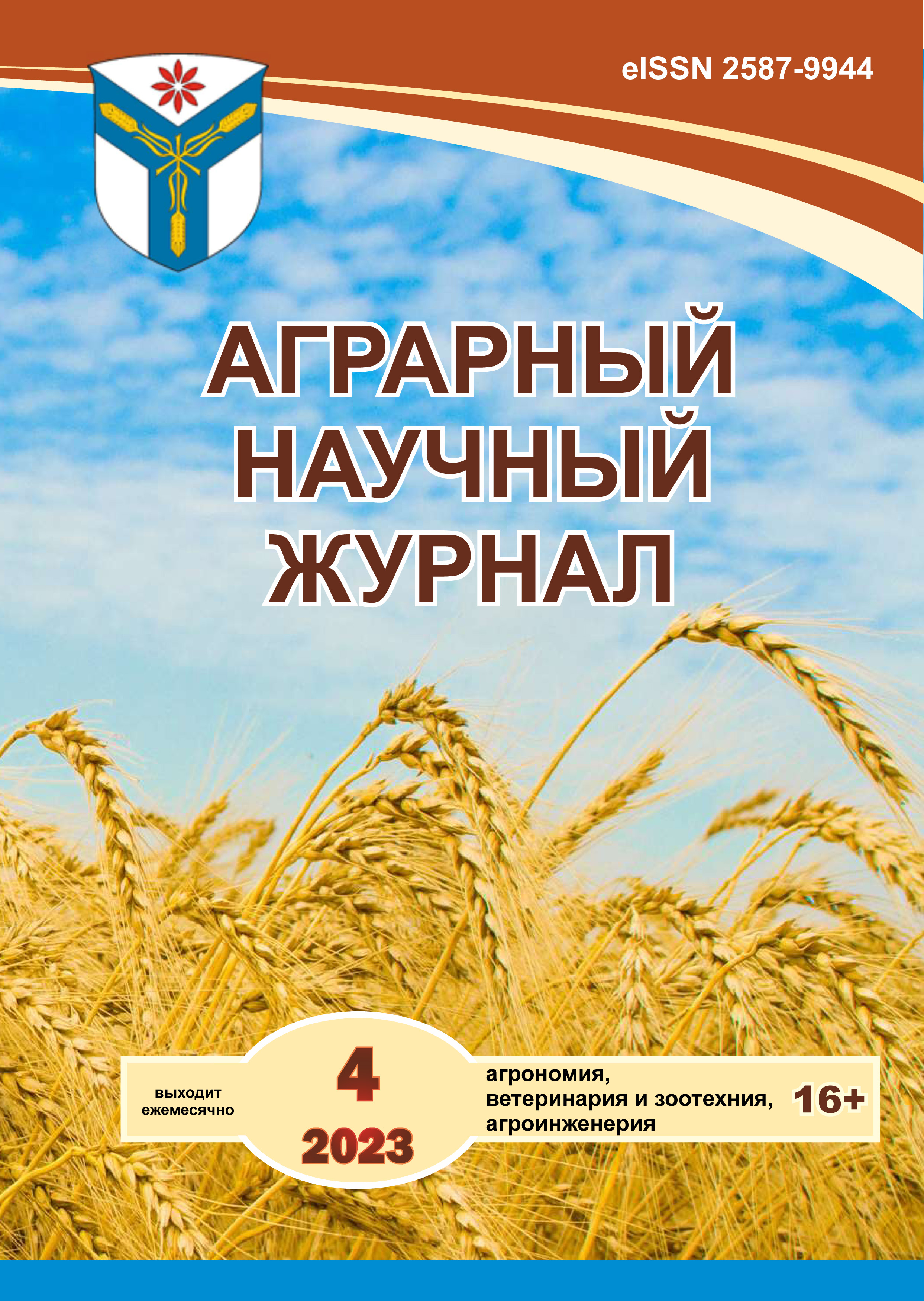Technology for preparing silage in rolls with the use of biological and chemical preservatives
DOI:
https://doi.org/10.28983/asj.y2023i4pp130-136Keywords:
forage harvesting, green mass, wilting, haylage, grinding, biological and chemical preservativesAbstract
The task of producing large feeds through the dissemination of modern technologies and the creation of a high-quality forage base is paramount for animal husbandry. The aim of the study is to study various biological and medical preparations and their complex use while maintaining the senate in the expanded, revealed in the film, to clarify its quality and safety. The scheme of the experiment provides for the use of benzoic acid and powdered sulfur for surface treatment in case of detection with biological preparations Biotrof and Biosil NN, as well as only with benzoic acid in searches with the preparation of haylage without preparations. For harvesting haylage, oriental goat's rue mixed with cereals is used. The laying of experimental batches of haylage is carried out under production conditions according to the generally accepted methodology of laboratory experiments. The quality of haylage was controlled by organoleptic parameters, acidity, content and ratio of acid fermentation. As a result of the research, it was found that canned haylage drugs have the best organoleptic characteristics characteristic of high-quality feed. The best effect of conservation was the combined treatment of silage powdered sulfur and lactic ferment Biosil NN. The use of these preparations increases the formation of butyric acid in the haylage, the dominance of lactic acid in the residues of acid fermentation (83.0%) has been identified, due to the fact that the feed is better acidified (pH=4.7) than haylage without consumption (pH=5, 38). According to the result of a comprehensive assessment of the quality of haylage for all assessed indicators, this feed is applied to the 1st quality class, which to the greatest extent gives an assessment of ruminant tests.
Downloads
References
ОСТ 10 201-97. Стандарт отрасли сенаж. Технические требования. Система нормативных документов в агропромышленном комплексе Министерства сельского хозяйства Российской Федерации. М., 2001.
ГОСТ Р 55452-2013 Национальный стандарт Российской Федерации. Сено и сенаж. Технические условия. от 01.07.2014 г. Издание (июнь 2020 г.) с Поправкой* (ИУС 1-2015). М., 2013.
Бондарев, В.А. Закваска Биотроф для получения качественного силоса // Сельскохозяйственные вести. 2002. № 1. С. 29-32.
Гудыменко В. И., Костин Д. Н. Эффективность применения пробиотика Биотроф при силосовании бобовых // Проблемы животноводства. Белгород, 2008. С.154-156.
Кинсфатор О. А., Коннова И. Ю. Эффективность использования консерванта «Биотроф 111» при заготовке сенажа в пленочной упаковке в кормлении лактирующих // Вестник Новосибирского государственного аграрного университета. 2017. № 2 (43). С. 129-135.
Шишкина И. А. Эффективность использования биопрепаратов Биосил НН и Lactocоcсus Lactic при силосовании однолетних бобово-злаковых трав // Аграрная наука Евро-Северо-Востока. 2011. № 2 (21). С. 12-18.
Приготовление объемистых кормов с использованием консервантов различной природы (Рекомендации) / В. М. Дуборезов [и др.]. Дубровицы, 2005. 20 с.
Усков Г. Е. Использование химически консервированного силоса из козлятника восточного в кормлении бычков // Кормопроизводство. 2007. № 8. С. 30-31.
Заготовка, хранение и выемка силоса и сенажа из бобовых культур / Б. Г. Шарифянов [и др.] // Актуальные проблемы и пути развития животноводства: материалы Всерос. науч.-практ. конф. в честь 75-летия основания кафедры физиологии и биохимии животных. Уфа, 2009. С. 246-250.
Болотова Н. С. Требования приготовления высококачественного силоса и сенажа из высокобелковых трав // Кормопроизводство. 2009. Вып. 17 (65). С. 28-32
Жужин М. С. Разработка устройства дозированной подачи для консервирования кормов: дис. … канд. техн. наук. Княгинино, 2017.
Орлянская И. А. Повышение эффективности процесса заготовки сенажа в рулонах, упакованных в пленку: дис. … канд. техн. наук. М., 2018. С. 22-26.
Downloads
Published
Issue
Section
License
Copyright (c) 2023 The Agrarian Scientific Journal

This work is licensed under a Creative Commons Attribution-NonCommercial-NoDerivatives 4.0 International License.








